Research
|
|
|
My research focuses on anthropogenic impacts on ecosystems. I am interested in applied questions of how ecological communities respond to changing climate, habitat degradation, and loss of predator species. The consequences for an ecosystem of changing environmental conditions or trophic structure will depend both on direct effects on component species and indirect effects arising from species interactions. Through field-based research drawing on ecology, biogeochemistry, and microbiology, I work to distill community- and ecosystem-level responses down to their component pathways. Competition, facilitation, consumption, and disease are everywhere in nature. In seeking to understand and predict the fate of ecosystems under continued human influence, we ignore these relationships at our peril.
|
| |
Climate change impacts on grassland structure and function
|
|
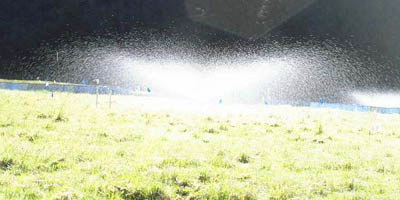 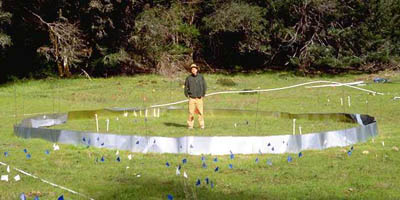
.jpg) 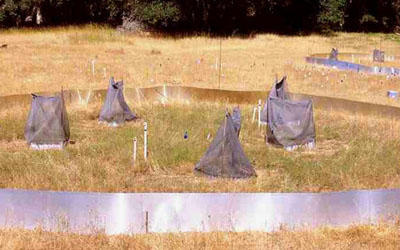
|
|
Effects of recent climate change on plants and animals are evident in geographic and elevational shifts in species ranges, altered timing of phenological events, and even the disappearance of some species. How will species, communities, and biomes respond to the more substantial changes still expected? Answering this critical question will require improved understanding of the relative importance of direct climatic effects on species versus indirect effects mediated by changing interactions with resources, competitors, pathogens, and predators. By manipulating climate over whole communities of interacting organisms and measuring responses across several trophic levels above and belowground, I am working toward this improved understanding for grassland ecosystems in California.
|
| |
|
Consequences of fine sediment loading for stream food webs and juvenile salmonids
|
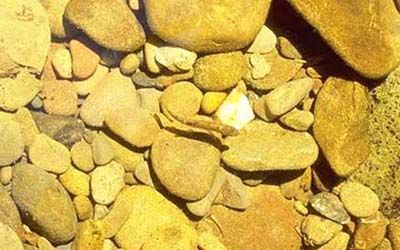
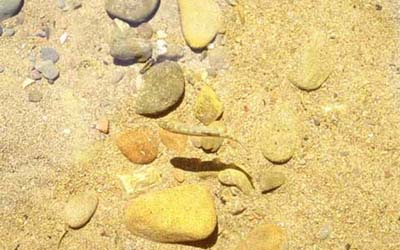 |
Like most western streams, the South Fork Eel River has seen steep declines in Pacific salmon populations during the last century. These have come in response to numerous threats, but chief among them has been degradation of stream habitat quality due to excessive loading of fine sediments into historically gravel-bedded rivers. Impacts of deposited fine sediments on adult spawning and embryo survival are well understood, but relatively little is known about effects on demographically critical juvenile rearing stages. Working with Professor Mary Power and several Power-lab collaborators, I am studying how fine sediments affect the performance and survival of juvenile steelhead and the structure and composition of the underlying stream food web.
|
| |
Top-down effects in terrestrial ecosystems
|
|
I am interested in the role of predators in and consequences of their elimination from terrestrial ecosystems. My research in this area has focused predominantly on hunting spiders as model predators. Even within this one guild, there is exciting variability in interactions with and impacts on surrounding food webs.
|
|
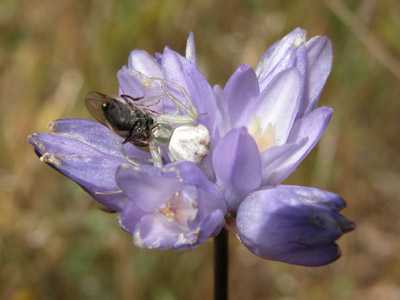 
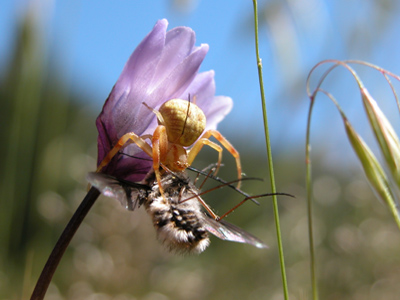 
|
|
Spiders that hunt from the inflorescences of flowering plants can exert negative indirect effects on plant reproduction. By reducing visitation by pollinating insects, these spiders can decrease pollination rates and seed production.
|
|
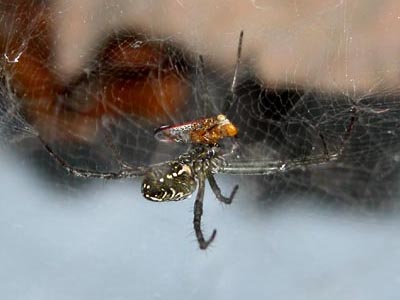 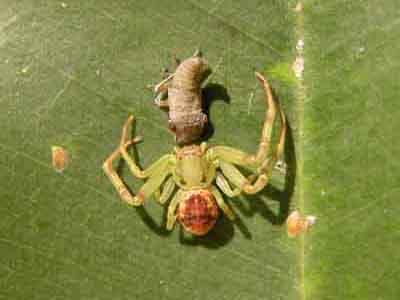
|
|
While teaching on the islands of Mo'rea and Tahiti in French Polynesia, I discovered a surprising consequence of spider predation on the invasive glassy-winged sharpshooter, Homalodisca coagulata. Spiders are killed simply by attacking and attempting to feed on H. coagulata. Mortality appears to result from lethal intoxication, although no form of chemical defense has been reported in this or any other sharpshooter species. This is particularly intriguing because chemical defenses would need to be created de novo. The sharpshooter feeds exclusively on xylem fluids and has little exposure to plant secondary chemicals that could be sequestered for its own chemical defense. Moreover, adverse effects on predators have not been reported from the native range of H. coagulata, and we find repellence but not lethality to predators in invaded ranges in California. We suspect that lethality may be a biogeographic consequence of island spiders. having evolved in the absence of chemically defended prey, and are developing research plans to explore this possibility and to track impacts on island spider populations.
|


.jpg)








